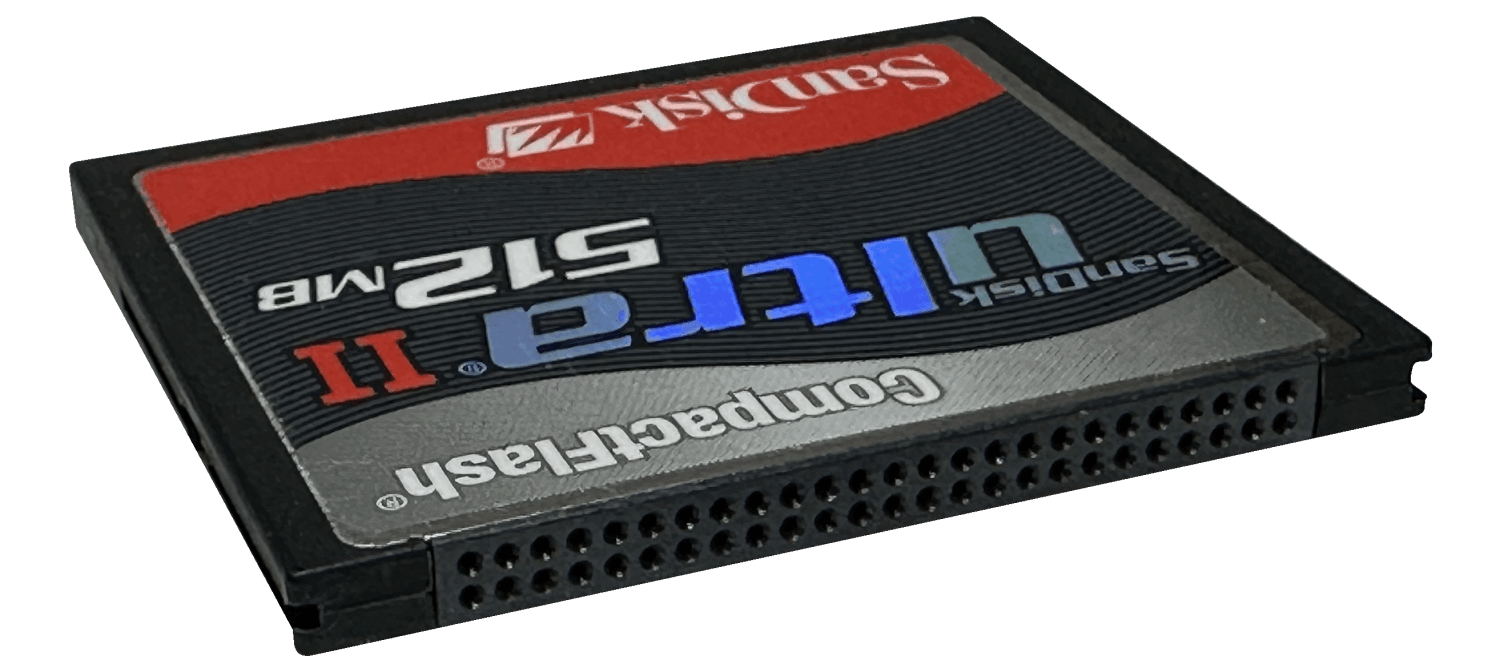Compact Flash
Compact Flash, often abbreviated CF, is a removable memory card format that uses nonvolatile flash memory. Digital cameras and other handheld electronic devices use CF cards to store and transfer digital photos, video, and other data. SanDisk introduced Compact Flash in 1994, and over time it became one of the most common removable memory card formats. However, it is becoming less common as newer formats like SD, microSD, and CFexpress become more popular, phasing out the CF slot in new digital cameras.
Compact Flash memory cards are available in two physical sizes, known as Type I and Type II. Type I CF cards are 3.3 mm thick, while Type II are 5 mm thick. Type II cards can use that extra space to add features to the card, like Wi-Fi or Bluetooth wireless radios, to allow data transfers between cameras and computers without removing the card. Type I cards can fit into Type II slots, so a camera with a Type II CF slot can accept any CF card. Both types use a 50-pin connector based on a subset of the 68-pin PCMCIA connector. External card readers allow computers to read CF cards.
During the height of its popularity, the Compact Flash format had several benefits over other types of memory cards. It was physically larger than other formats, but that meant that it was also more durable. It was available in higher capacities than other formats (up to 512 GB) and provided faster transfer speeds (up to 160 MB/s). Most big camera makers (including Canon and Nikon) included CF card slots on their consumer- and professional-level digital cameras. Over time, however, the SD card format became more popular due to its smaller size, which allowed for smaller camera bodies. In 2017, a successor format, CFexpress, was introduced with significantly faster read and write speeds necessary for high-resolution 4K and 8K video recording.

 Test Your Knowledge
Test Your Knowledge